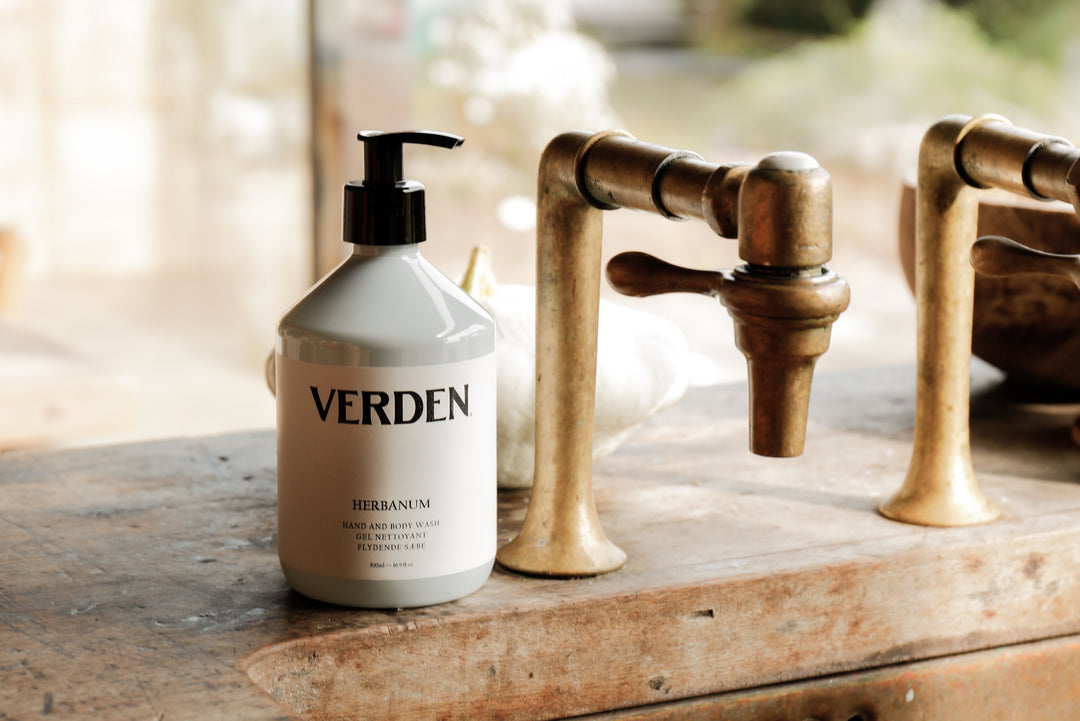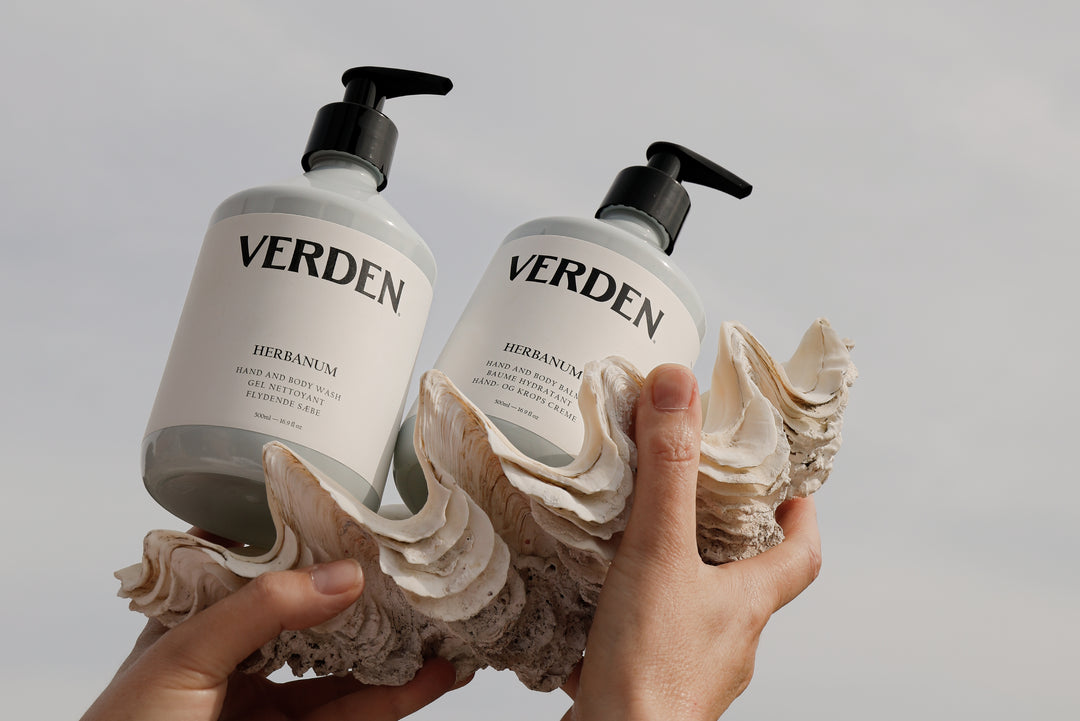A Juodkrante Summer

This week, we're thrilled to be able to share with you a peek into the summer home of Giedre Barauskiene. Based in Vilnius, Lithuania, Giedre worked as an Editor-in-Chief in several Lithuanian magazines for women before pursuing a career as an editorial and commercial food photographer and stylist. Giedre is an author and a photographer of several cookbooks.
Where is your summer home, and what drew you to this location?
Our family's summer home is in Juodkrante, one of the most beautiful and tranquil resorts in Lithuania, located in a unique area of the Curonian Spit. This area is included in the UNESCO World Heritage Site as an exceptional example of the Landscape of Sand Dunes. The name Juodkrante means 'black shore,' though it’s not actually black.
The life of the fishing village of Juodkrante changed in the mid-19th century when large quantities of amber were discovered, and the first amber mine in Europe was opened in the lagoon. Previously known only as a fishing village, Juodkrante began to gain popularity as a resort around 1840. Many hotels, villas, summer homes, and restaurants were established here. In fact, even Queen Louise of Prussia visited Juodkrante in 1807.

I’ve known this place since childhood. The Curonian Spit can be accessed by ferry from Klaipeda, my hometown. That few minutes on the ferry feel like entering another world. Here, you can breathe deeply and leave all your worries behind on the continent. I can’t imagine a summer vacation without spending time here. While we enjoy holidays abroad, the best rest for us is always in Juodkrante, no matter the weather. From personal experience, we know the best time for summer holidays here is in July, August, and the beginning of September.
Juodkrante is uniquely situated between the sea and the lagoon, surrounded by forests. Here, you might encounter foxes, roe deer, moose, and even wild boars. The wide, white sand beaches are spacious, and you don’t have to travel far to find solitude. There are no tall buildings, and a number of old, authentic buildings have been preserved. Local fishermen still fish with nets in both the sea and the lagoon.
The beauty, tranquility, uniqueness, and coziness of this place bring us back every year. Every day here begins and ends with the sound of the beautiful Gothic-style red brick church bells, which ring every hour, reminding us to live in the moment and enjoy the present.

Do you have any cherished rituals or routines that mark the start of the summer season?
When the warm season begins, my mornings start with a cup of coffee in the flower garden, and this ritual continues until late autumn. As the weather warms up, I take the houseplants outside to enjoy the fresh air because I want my flowers to help me get through the long winter. Of course, in winter, the smell of greenery is missing, but my eyes are happy.
What’s more, at the end of the summer, I cut fennel stems with flowers from my garden and dry them for the winter. For me, they’re very decorative, and just passing by them brings back the feeling of summer. Remembering something (or someone) means bringing it back.

How does the design of your summer home differ from your main residence?
Juodkrante's architecture is reminiscent of Scandinavian style. The village is dominated by tile-roofed wooden houses with ornate porches. The fishermen's homes are decorated with wooden weathercocks, with shapes that tell the story of the fishermen’s lives.
In Juodkrante, I mainly photograph outdoors, while at our main house, I focus on indoor photography. Our main house in the capital is modern, with neutral colors dominating the interior. The exterior colors in Juodkrante are mostly pale and navy blue, reddish-brown, and white. As a photographer, this offers a completely different experience. Over the years, I’ve learned to appreciate and capture these local colors.
While preparing my answers for this interview, I realized that I’ve been focusing on food and nature photography for years, and my archive contains almost no photographs of Juodkrante’s architecture. This summer, I intend to correct this unforgivable oversight.
By the way, there is one similarity between our main house and our summer house: they both have gardens. In Juodkrante, this is a rare privilege, as the soil is sandy, and not every homestead has a garden.

What scents remind you of summer, and how do you incorporate them into your home?
The smell of the sea and the lagoon. It’s especially noticeable on the first day. There’s also the scent of drying nets, fresh fish, mushrooms, pine forests, thyme, seaside herbs, and flowering beach roses. All of these scents can only be experienced here- except for one. When I go on vacation, I dry a small bag of rose petals and bring them back to our main house. I inhale their fragrance during the winter and, for a moment, I find myself back in Juodkrante.

What’s your favourite room or outdoor space, and how do you love to spend time there?
Our summer house is on the shore of the lagoon and has a terrace on the second floor. From here, through the treetops of the garden, I have a view of the shimmering water, the horizon, passing boats, and the sunrise. It’s also the perfect spot to watch my husband fishing, and I can wave to him from up here. I enjoy drinking coffee in the mornings while watching the swallows.

How do you bring the essence of summer into your interiors?
I’ve noticed that I listen to less music every spring, as it’s replaced by the chirping of birds. I open the windows and the terrace door, and the heartwarming sounds flood the space where I usually work. At the same time, the house fills with the freshness and scents from the garden.

What colours, textures, or materials define the feel of your summer retreat?
The Curonian Spit is home to exceptionally beautiful and unique dunes, along with golden bentgrass valleys by the sea and in the forests. I’d ruin it by trying to describe it in words - the photographs capture only a glimpse of its beauty.

Is there a particular piece of furniture or décor item that embodies summer for you?
I don't think it's about material things - it's more about a feeling of happiness and tranquility. And maybe also the photographs from here.

What’s your ideal summer gathering at home - who’s there, what’s on the table, and what’s in the air?
We have a tradition of celebrating our closest relatives' birthdays and other special occasions together.
In the summer, family get-togethers take place in a grape-covered gazebo next to the house.
We prepare desserts in advance and cook other meals together. We usually grill marinated meat and various vegetables, and we make salads using fresh ingredients from our garden. I have a signature apple cake made with natural Lithuanian apple wine (which can be substituted with white grape wine). The taste of this dessert is exceptional, and everyone looks forward to it.
My husband is a salad master. His brother is a great griller, and his wife is a marinade specialist. The rest of the family, of course, is very happy about this ☺ But they also get culinary tasks.
I’d love to share with readers how we make one of our favorite salads. We use fragrant sour fruit (Chaenomeles japonica) syrup to flavor salads all year round, which I make every fall. I cut the fruit, sprinkle it with sugar, and stir it for a few days until the sugar dissolves. Then, I store the jars in the refrigerator. This syrup has a distinct sweet-sour taste and a particularly pleasant aroma.
During our summer vacation in Juodkrante, we also have what we call wild food feasts. My husband fishes for bream and perch in the lagoon. We fry, grill, or take the catch to a local fisherman who smokes it in his smokehouse. We pick boletus, blueberries, and lingonberries in the forest - sometimes just on the way to or from the sea.
But the greatest summer delicacy, one that can only be made here, is beach rose hip jam. (By the seaside, these berries grow quite large and are delicious even when eaten raw.) I learned to make this jam from the locals, and its taste is divine. It’s also very simple to prepare. You just need to remove the stems, cut the berries in half, scoop out the seeds with the tip of a blunt knife, and cover the cleaned berries with plenty of sugar in a pot. The covered pot must be shaken vigorously several times so the berries begin to release their juice. Then, they are cooked over low heat in their own juice until they soften. We enjoy this jam with pancakes, bread, curd, yogurt, or even ice cream. If you’ve never tasted it before, you’ll be pleasantly surprised.

FIND GIEDRE:




